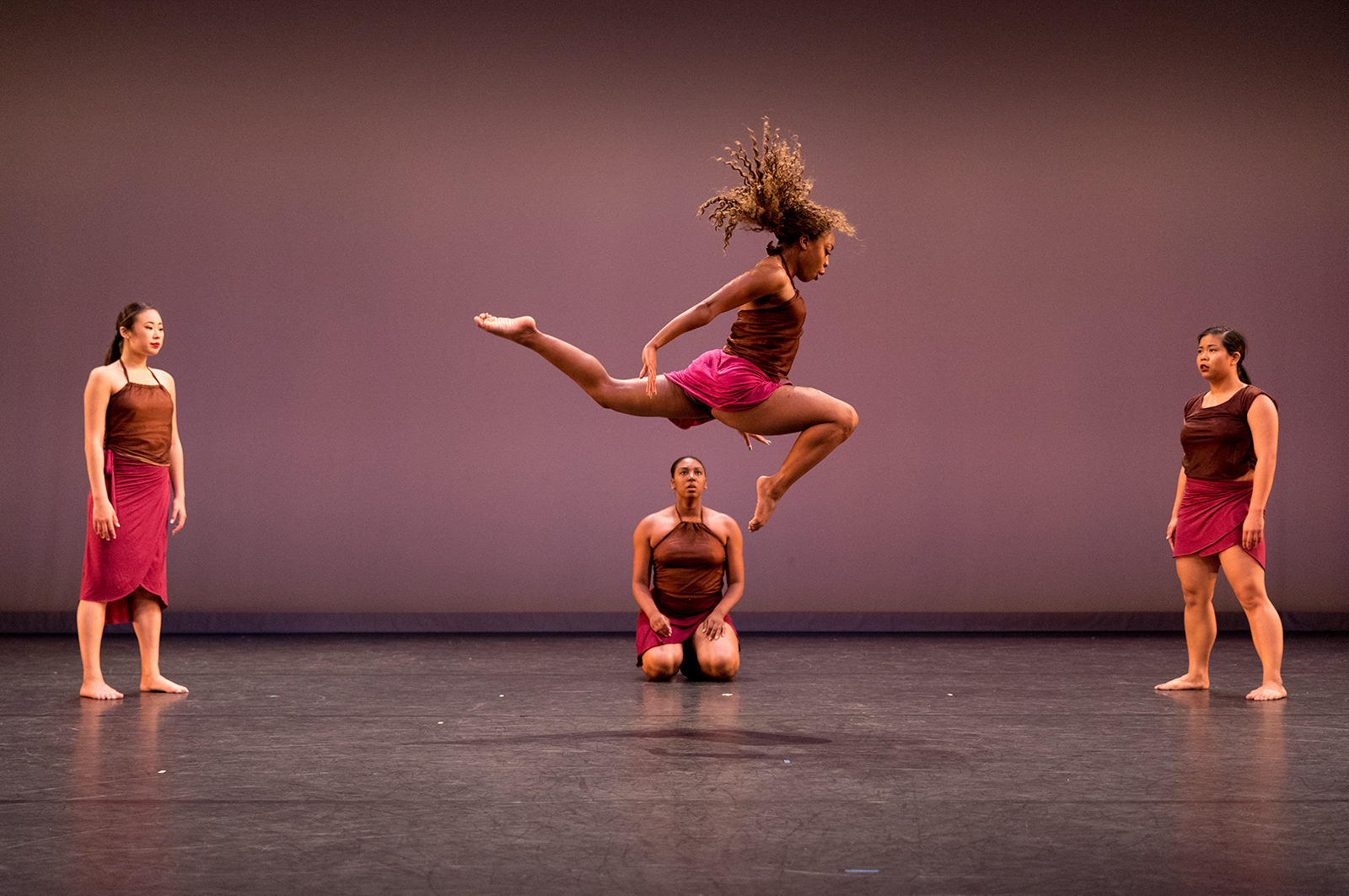Performance arts students deserve same health resources as other athletes

Performing arts students face intense physical stress in pursuit of class grades and accolades. These students’ workloads are akin to the stresses of NCAA athletes, but they aren’t afforded have the same amount of medical support. (Daily Bruin file photo)
By Chris Rybus
Jan. 21, 2020 11:25 p.m.
Pain is temporary, but GPA lasts forever.
Unless you’re a performing arts student getting injured consistently, that is.
UCLA is home to a world-renowned performing arts department, and its students pursue college as a way to practice their passions. However, dancing classes are rigorous by nature, since they require jumping, spinning and other physical activities that could lead to a plethora of injuries. For musicians, unnatural postures and repeated strain can lead to nerve and muscle damage.
While NCAA athletes and the UCLA Club Sports Athletic Training program have team doctors, students with majors that require a great deal of physical activity are left with few resources to assist them. The amount of work these students put in is not met with the same amount of care they deserve.
Many classes at UCLA include participation to determine final grades. But for performers, grading based on attendance is taken to an entirely different level – and it includes a lot more than just sitting at a desk. Dancers must take movement classes as a part of their major, where active participation is mandatory, and injuries are practically part of the curriculum.
And for dancers and musicians, they have a grade hanging in the balance.
Performing arts students deserve a comprehensive support system during their time at UCLA. To better manage the nagging injuries that come with each field, the university should explore options on how to bring in physical therapists for these students. In order to provide performing arts students with the support they need to succeed academically, UCLA needs to reprioritize funding from the student-athletes in the gym to those in the studio.
When factoring in classes, rehearsals and performances, it is clear that training can take a toll on a dancer’s body.
Sabina Schaffer, a fourth-year dance and world arts and cultures student, said her training can reach up to 24 hours per week.
“I had some tendonitis in my foot and my ankle that put me out for a while,” Schaffer said. “And I’ve had some wrist issues in the past.”
This physical strain can lead to injuries that prevent a dancer from participating in their classes. And when forced to continue to push through an injury for a make-or-break grade, performers like Schaffer are left with little time to heal.
If performing arts students had physical therapists, the frequency and duration of injury would be mitigated. But instead of proper facilities and physicians, dancers like Schaffer are limited to the Arthur Ashe Student Health and Wellness Center – where clinicians told her to stay off her foot.
And for a major that focuses so heavily on participation, days off are not a luxury students can afford.
This experience is not unique to dancers. Music may not seem physical at first glance, but the major requires performers to hold positions for hours on end to perfect their techniques. Orchestra and studio classes often rely on attendance for grades and consistently require many hours of rehearsal per week – often leading to persistent hand, wrist or back pain.
Madison Dorsett, a second-year music performance student who studies the french horn, said that she’s seen these demanding positions lead to serious discomfort and injury among her peers.
“I’ve known students who’ve been so physically hurt and distraught, they can’t play anymore,” Dorsett said. “It’s kind of sad, but we just do it because we love music and that’s what we want to do for the rest of our lives.”
But a passion for music shouldn’t lead to a broken-down body.
Dan Froot, the chair of the Department of World Arts and Cultures/Dance, said he recognizes that dance is physically strenuous and that injuries are common, but the department does not have the extra money to spend on injury-related resources with their current budget.
This underfunding for the arts is widespread across the nation. While it is unreasonable to ask UCLA to solve such a deeply systemic problem, the university can help lead a change toward getting its performers the support they need.
“One thing I’ve been thinking about is to see if we would want to do an injury prevention course, maybe that a graduate student could teach,” Froot said.
That would certainly be a great starting position for dancers and musicians, but it will not assist performers who are currently experiencing injury or discomfort. For a long-term solution, performing arts students need the same resources UCLA offers to other athletic organizations.
Most of the club sports teams share on-site trainers and away trainers if need be. So if UCLA can splurge on physical assistance for recreational sports, surely there’s money to reallocate for students whose grades and careers depend on their ability to perform.
“Anything that requires a physical accommodation to it should have the health assistance that any other athlete would receive,” Dorsett said. “If I have to represent the school as a musician and bring audiences to the building and give it the recognition it has, I feel they should do more for their students.”
Some may argue that Division I sports fund the school, and therefore deserve the funding they receive. That might be true, but funding electronic stimulation therapy for the club quidditch team feels a lot less valid. Performing arts students might not consistently rake in the cash, but they’re paying the university for an education – and they have a right to be healthy in that pursuit.
As long as UCLA continues to disregard the plight of performing arts students, the injuries will rack up.
And if they do, pain and a good GPA will continue to go hand in hand.


